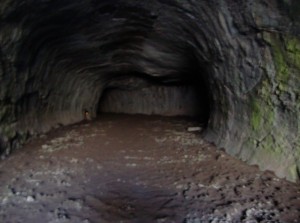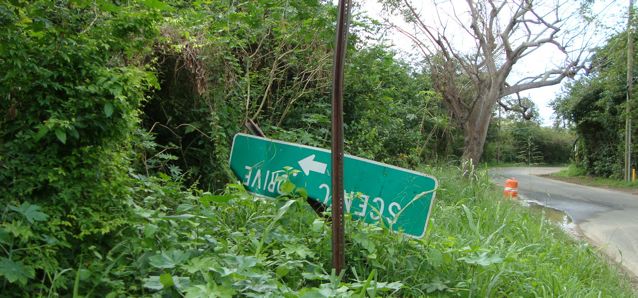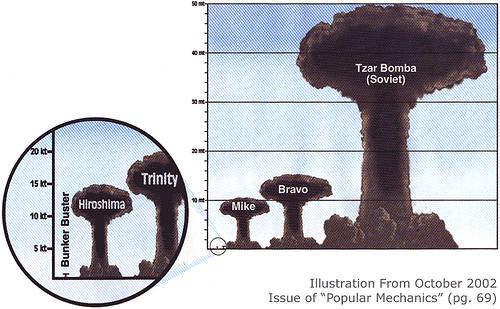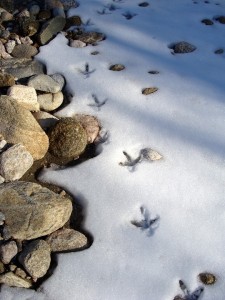 I have two walnut trees in my front yard. Every year I engage in a multi-month skirmish with the resident tribe of squirrels. Over the 17 years we have lived here, I have employed several techniques to protect my crop: some legal, some sporting, some questionable. The cumulative scoreboard shows me somewhat ahead (to be fair, I’m the one who’s keeping the tally), but last season Sciurus griseus triumphed over Homo versutus, so I built a cage with a trigger that—when coated with peanut butter and nuzzled by a hungry, unsuspecting squirrel—drops a trapdoor and secures the thief. Continue reading “Walnuts and Squirrels and WHAT? Oh, my!”
I have two walnut trees in my front yard. Every year I engage in a multi-month skirmish with the resident tribe of squirrels. Over the 17 years we have lived here, I have employed several techniques to protect my crop: some legal, some sporting, some questionable. The cumulative scoreboard shows me somewhat ahead (to be fair, I’m the one who’s keeping the tally), but last season Sciurus griseus triumphed over Homo versutus, so I built a cage with a trigger that—when coated with peanut butter and nuzzled by a hungry, unsuspecting squirrel—drops a trapdoor and secures the thief. Continue reading “Walnuts and Squirrels and WHAT? Oh, my!”
Category: Nature
Subway Cave
 Some 20,000 years ago, a volcanic eruption sent gouts of lava into what is now Northern California’s Hat Creek Valley. This molten rock, like any liquid, flowed downhill, gravity pulling it into the lowest channels. These rivers moved slowly, the sides and top cooling as they touched ground and air. A hardened skin slowly formed around the molten flow, creating a rock tube through which the still-liquid lava continued its downward movement. If the gradient was steep enough—and the viscosity low enough— Continue reading “Subway Cave”
Some 20,000 years ago, a volcanic eruption sent gouts of lava into what is now Northern California’s Hat Creek Valley. This molten rock, like any liquid, flowed downhill, gravity pulling it into the lowest channels. These rivers moved slowly, the sides and top cooling as they touched ground and air. A hardened skin slowly formed around the molten flow, creating a rock tube through which the still-liquid lava continued its downward movement. If the gradient was steep enough—and the viscosity low enough— Continue reading “Subway Cave”
Lost! (Episode 4: St. Croix)
 A mile south of our camp, we found a fallen sign next to a broken road leading uphill and west: Scenic Route. Our now-crumpled map, provided free at the airport days earlier by hopeful advertisers,
A mile south of our camp, we found a fallen sign next to a broken road leading uphill and west: Scenic Route. Our now-crumpled map, provided free at the airport days earlier by hopeful advertisers,  echoed the invitation: Scenic Route. Our eyes met, questioned, then agreed. A right turn, and we were adventure-borne.
echoed the invitation: Scenic Route. Our eyes met, questioned, then agreed. A right turn, and we were adventure-borne.
In minutes the winding pockmarks became new macadam, but our progress remained slow until we passed the yellow-flagged, plant-eating crew manning machines that chewed shoulder grass, weeds, and three-inch thick branches like Skoal. Continue reading “Lost! (Episode 4: St. Croix)”
Chilean Earthquake Energy
 This morning’s devastating earthquake in Chile (8.8 on the Richter scale) had an energy equivalent of approximately 15.8 gigatons of TNT (31,600,000,000,000 lbs). To put that in perspective, it is about as much energy as would be released by 300 of the largest thermonuclear bombs ever built (the USSR’s Tsar Bomba, detonated in Novaya Zemlya in 1961).
This morning’s devastating earthquake in Chile (8.8 on the Richter scale) had an energy equivalent of approximately 15.8 gigatons of TNT (31,600,000,000,000 lbs). To put that in perspective, it is about as much energy as would be released by 300 of the largest thermonuclear bombs ever built (the USSR’s Tsar Bomba, detonated in Novaya Zemlya in 1961).
The largest earthquake ever recorded was the 9.5 magnitude 1960 Valdivia earthquake, also in Chile.
Just to put the Great Chilean Earthquake (an alternate name for the Valdivia quake) in its perspective, scientists estimate that the Yucatán Peninsula bolide (meteor) impact that created the Chicxulub crater 65 million years ago and led to mass extinction of the dinosaurs and other species had the energy of almost 600 Valdivia earthquakes.
Blue Moon Bloops
 According to almost every online source that commented on it, the round disk in the sky on the last day of 2009 was a “blue moon,” a term commonly used for the second full moon in any calendar month.
According to almost every online source that commented on it, the round disk in the sky on the last day of 2009 was a “blue moon,” a term commonly used for the second full moon in any calendar month.
Commonly—and erroneously.
The internet offers near-instant access to information. It is ironic that in some cases this easy of access decreases accuracy.
Wikipedia explains the term clearly and correctly:
A blue moon is Continue reading “Blue Moon Bloops”
Verlyn Klinkenborg’s “February Traces”
 This short piece, from the Opinion page of The New York Times (2/2/09), is unpretentious, evocative writing. Read it aloud…slowly.
This short piece, from the Opinion page of The New York Times (2/2/09), is unpretentious, evocative writing. Read it aloud…slowly.
Up here in the country, the world gets a used-up look a day or two after a February snowfall. Dust drifts over the fields from the dry roads, the corn stubble begins to poke through, and the plows have left a margin of gritty slush and knocked down a mailbox or two. All the more reason to look for those moments just after a snowfall, when the snow is not yet public, when it has only been tracked by an animal or two out on the ice and in the fields.
I never see a truly straight track. There is always a bend in it, as if curiosity was a kind of lateral gravity, always Continue reading “Verlyn Klinkenborg’s “February Traces””

